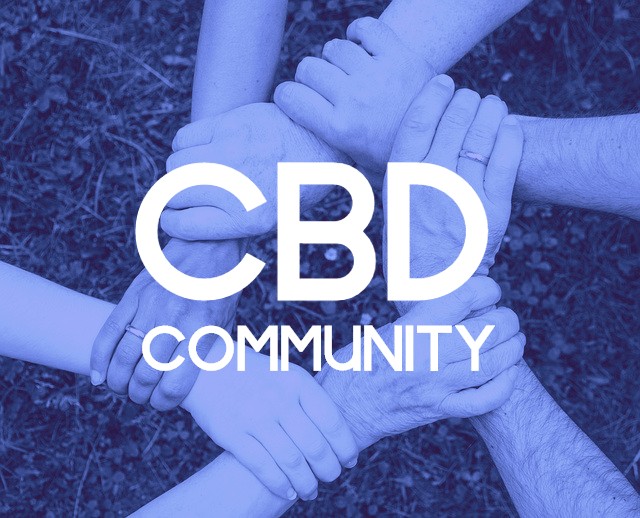Many people are unaware that the phytocannabinoids found in hemp and cannabis come in two types that are acidic (such as CBDA and THCA) and neutral (CBD and THC). While neutral cannabinoids have received lots of interest, recent studies have shown that cannabinoids in their acidic form possess tremendous healing properties that work in conjunction with and in contrast to neutral cannabinoids.
In this article, I discuss the information we have learned about the current state of acidic cannabinoids and the reasons you should be incorporating these into your routine. Here’s what I want you to be aware of:
- Patients have reported that THCA and CBDA dramatically improved their chronic inflammation-related conditions such as insomnia and pain
- Patients feel immediate effects, and effects continue to increase over the course of 30 days.
- The low doses of acidic cannabinoids are efficient and can help you save money since they are absorbed 5-50 times more than neutral cannabinoids when taken orally.
- Acidics (THCA and CBDA) are not psychoactive when taken on their own; however, when they are combined with THC, they become syngestic and enhance their benefits.
- Acidic cannabinoids enhance the therapeutic effects of the “entourage effect”
What are Acidic Cannabinoids?
Many people are shocked to discover that hemp and cannabis plants don’t directly produce the well-known cannabinoids known as tetrahydrocanna (THC) as well as cannabidiol (CBD), or any of the other hundreds of compounds that researchers have discovered.
The raw, original forms of cannabinoids that plants produce are referred to as acidic cannabinoids, such as THCA as well as CBDA (The “A” stands for “acid”). Acidic cannabinoids are limited in their presence, but they gradually transform into their more well-known, robust “neutral” counterparts at room temperature, or faster when exposed to temperatures that are high and temperatures, a process referred to as decarboxylation.
Both neutral and acidic forms of cannabinoids may provide beneficial effects for animals and individuals by their effects on the body’s endocannabinoid systems (ECS) and other target organs within the body. Acidic cannabinoids do not intoxicate and have distinct effects when compared to their neutral counterparts and work effectively together to boost efficiency based on synergistic effects called”entourage effect” “entourage effect”.
Cannabinoids of minor and major magnitude as well as the “Entourage Effect”
The idea of an entourage effect was first introduced around 1998 Israeli researchers Shimon Ben-Shabat and Raphael to explain the functions of the body’s own cannabinoids, (endocannabinoids) that work in conjunction together to regulate our body’s physiology. Incredibly, the phytocannabinoids (from the cannabis plant) also work in tandem to maximize the benefits of each other and reduce adverse effects. In nearly every study that studies the effects of cannabis’ entourage has shown the multicomponent compound (like entire plant extracts) are more effective in conjunction in comparison to synthetic or isolated cannabinoids.
It is important to remember that there aren’t all cannabinoids in all plants or in the products made from hemp or cannabis plants. The most abundant cannabinoids are regarded as major cannabinoids, while those that are less abundantwhich include the most common acidic and original forms are referred to as minor cannabinoids.
The three most acidic cannabinoids that we are most familiar with currently include THCA, CBDA, and CBGA as the natural precursors to the most prominent cannabinoids THC, CBD, and CBG:
THCA Vs. THC
Delta-9-tetrahydrocannabinol (THC) is not only the most well-known cannabinoid, it’s also the most studied. THC is the main reason for the psychoactive effects that are associated with cannabis, in addition to numerous beneficial properties. THC has been proven to have numerous therapeutic effects that include relief from spasticity, pain, inflammation, nausea anxiety, seizures, itching, and many more.
THCA is not a cause of pain according to animal studies [11] and anecdotal reports from humans. The limited research on THCA has shown anti-inflammatory properties and anti-nausea effects in mice, at doses that are smaller that the THC equivalent [22]. In contrast to THC, THCA does not seem to activate the CB1 and CB2 receptors, however certain aspects of its activities could be in indirect dependence on their functions.
A recent study has shown that THCA increases its activity in CB1 receptor. CB1 receptor when it is stimulated by an artificial cannabinoid [33] It is likely to do exactly the same thing when combined together with THC. The coadministration of THCA together with THC can also reduce the breakdown and elimination of THC Another way that THCA could boost the potency of THC.
In my clinical practice, I’ve been amazed by the anti-seizure effects of THCA in extremely small doses, and also the anti-inflammatory and nausea-reducing properties. I’ve also observed it to be effective for patients who are extremely sensitive and are unable to use THC.
CBDA can be a better alternative to. CBD
Non-psychoactive cannabidiol (CBD) is now the focus of attention in the medical field, media, and laws relating to cannabis. CBD has been proven to reduce depression, anxiety seizures, pain psychosis, inflammation nausea, spasms, and many more[44].
Many ways CBDA functions similarly to CBD in many ways and is activated at the capsaicin and serotonin receptors. CBDA is, in contrast to CBD is not discovered to alter cannabinoid receptors. However, it has been proven to target the COX enzymes that are linked to inflammation, which is similar to the process of many over-the-counter anti-inflammatory medications.
If CBDA can be administered by mouth, it is absorbed significantly better (5x-11x more effectively) over CBD [55]. Further evidence is available that animal models suggest CBDA is more potent and efficient than CBD and CBD, not just because CBDA is more absorbable, but because it exerts more force. In tests on animals, CBDA was shown to be 10 times more efficient than CBD in the model of seizures [66], hundred times stronger in the model of inflammation pain [77, 10 times stronger in the model of nausea [88, and 50 times more potent in an anxiety model [99.
In the end, CBDA does not lessen the euphoric effects of THC or interfere with its effects when used in conjunction. CBDA is an excellent choice for those who take THC for spiritual or recreational reasons, but want to enjoy the benefits of CBD without sacrificing the advantages of THC.
CBG Vs. CBGA
At present, little research has been conducted to study CBG’s impacts on the effects of CBG and, even more so, CBGA. CBG has been proven to ease pain, decrease the appearance of redness on the skin, and also to reduce lipoxygenases, enzymes which create inflammatory molecules more powerfully as THC [10].
There is evidence to suggest that CBGA could possess its own therapeutic benefits However, it is most well-known for its contribution to the creation of cannabinoids in other forms. Similar to other cannabinoids CBGA is able to convert into CBG through heat and time. But, it also transforms CBGA into THCA as well as CBDA.
The Value of the Acidic Cannabinoids
Although we aren’t yet able to fully comprehend the medicinal potential of acidic cannabinoids in the beginning, research has already shown the fact that “acidics” have greater bioavailability that means they are more efficiently absorbed than neutral counterparts. There is evidence to suggest that they could even work more effectively within the body to treat the symptoms.
How to Get the Acidic Cannabinoids
In the process of smoking or vaporizing cannabis flowers, numerous beneficial components, including acidic cannabinoids are reduced or removed, so that only tiny amounts of acidic cannabinoids are absorbed.
Consuming raw cannabis extracts is a great method of taking in acidic cannabinoids. It is also incredibly simple to prepare. A small amount of raw cannabis flowers (e.g. 0.25 grams) can be consumed directly (chewing for a couple of minutes may speed up the its onset). Although large doses may cause digestive discomfort however, no other adverse effects have been reported in raw cannabis. To ensure your safety and health ensure that you choose a cannabis plant that is organic, and free of pesticides.
Another method to obtain pure cannabinoids is to make cannabis tea. It is done through boiling water, filling a cup with water and then adding a flower that is the size of a tiny pencil eraser or pea to let it sit for about 4 to 5 minutes. The tea will contain only a tiny amount of THC and is therefore unlikely to cause psychoactive effects due to the fact that THC is in low solubility water. When you are brewing a THC flower, and you add cream or milk and cream, the THC amount increases. If you are looking for a THCA-dominated tea, then don’t add any oil or fat. Hot water (<212 *F) assists in the extraction of acidic cannabinoids, but it will not decarboxylate the acidic cannabinoids.
For the extraction of acidic cannabinoids broad-spectrum products like tinctures and drops designed for specific dosages are the best. Be aware that traditional extraction and manufacturing processes could result in the loss or destruction of CBDA and other cannabinoids that are acidic So, seek out products with an extremely high CBDA concentration and store them in a cool, dry place to prevent the acidic cannabinoids from changing into neutral cannabinoids when they are at temperatures below room temperature.Also be sure to look for the tests conducted by an independent laboratory , or certification of analysis (COA) that confirm the variety of cannabinoids present in the product, including acidics, and confirming that the product is clean and free of any contaminants like mold, bacteria and pesticides, solvents as well as heavy metals.
How Much Do I Need to Take & How Often
I frequently recommend that patients to drink a cup of marijuana tea (THCA or mixed CBDA/THCA) every day for two weeks prior to taking note of its effects on your mental and physical well-being.
If you are using acidic cannabinoid products, begin with 5-10 mg two times every day, and gradually increase to 20 mg, if needed. In thirty days of use, the majority of users report experiencing the effects and how effects improve. If taken in drops, CBDA is a spicy flavor which can be removed with drinking a glass of water.
To treat acute nausea I usually suggest chewing a tiny pea-sized cannabis flowerand placing it between your lips and gum without taking it in.
The acidic cannabinoids are readily available as safe and beneficial. Make sure to incorporate them into your cannabis relationship!
[1] Grunfeld, Y., and H. Edery. “Psychopharmacological activity of the active constituents of hashish and some related cannabinoids.” Psychopharmacologia 14.3 (1969): 200-210.
[2] Rock, E. M., et al. “Tetrahydrocannabinolic acid reduces nausea-induced conditioned gaping in rats and vomiting in Suncus murinus.” British journal of pharmacology 170.3 (2013): 641-648.
[3] Palomares, Belen, et al. “D9-Tetrahydrocannabinolic acid alleviates collagen-induced arthritis: Role of PPARg and CB1 receptors.” British journal of pharmacology 177.17 (2020): 4034-4054.
[4] Zuardi, Antonio Waldo. “Cannabidiol: from an inactive cannabinoid to a drug with wide spectrum of action.” Revista brasileira of Psiquiatria 30.3 (2008): 271-280.
[5] Pellesi, Lanfranco, et al. ” European Journal of Clinical Pharmacology 74.11 (2018): 1427-1436.
[6] Anderson, Lyndsey L., et al. Journal of natural products 82.11 (2019): 3047-3055.
[7] Rock, Erin M., et al. Psychopharmacology 235.11 (2018): 3259-3271.
[8] Rock, E. M., et al. British Journal of Pharmacology 169.3 (2013): 685-692.
[9] Rock, Erin M., et al. Psychopharmacology 234.14 (2017): 2207-2217
[10] Evans, F.J. 1991. Cannabinoids are a way to separate peripheral and central effects on the basis of structural. Planta Med 57(Suppl 1):S60-7
Author
Nicole Davis is a integrative medicine specialist who focuses on sleep and fatigue. She has extensively explored the therapeutic properties of cannabis, and provides specialized treatment plans according to personal symptoms. Dr. Davis is passionate about helping people feel their best, and believes that everyone deserves access to quality healthcare.



